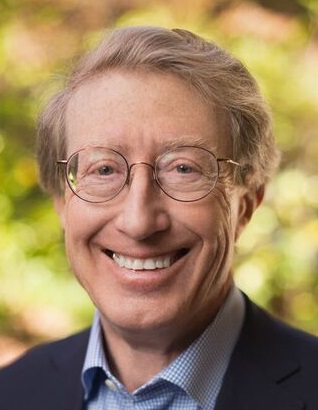University endowments in the crosshairs
by charles | Comments are closed12/12/2017
The U.S. has the greatest university system in the world. But it’s expensive. And congress is about to make matters worse by taxing the endowment earnings of “large” private college and university endowments.
The latest congressional proposal aims to slap a 1.4 percent excise tax on the net investment income of any private university with an endowment of more than $250,000 per full-time student, about 70 universities.
Unfortunately, universities can ill-afford any additional hits to the bottom line. A recent report by The College Board, found that a “moderate” college budget for an in-state public college for the 2016–2017 academic year averaged $24,610 and a moderate budget at a private college averaged $49,320.”
Private universities in particular lean heavily on their endowments for tuition assistance and operational support. Melissa Korn noted in the Wall Street Journal earlier this year, that “schools with endowments over $1 billion funded just over one-third of institutional grant aid from their endowments, while those with endowments of less than $25 million used that pool to cover 5.8% of aid”.
Endowment pools are like savings accounts and endowment earnings the interest. The more we draw from savings to spend today, the less money we earn to spend tomorrow.
Two years ago, I defended Yale’s endowment, arguing that its capital “is a perpetual source of support for present and future generations of students and faculty and, it takes a long time to accumulate.”
“Cambridge, the wealthiest university in Europe, took 800 years to amass an endowment of $8.1 billion. Harvard’s $36.4 billion took 377 years to accrue. Upstart Stanford University grew its endowment to $21.4 billion in “just” 130 years. And that “hoarded” wealth drove performance; American universities dominate the rankings of global higher education.”
Unfathomably, the latest congressional proposal to tax the earnings of “large” private school endowments turns that reality on its head. The legislative war cry now seems to be “grab what you can today and let future generations fend for themselves”.
There are four sources of income for American universities and colleges and all four are under pressure. State and federal support has been dropping for years. Endowment investment returns appear likely to decrease. Tuition costs have reached unsustainable levels. And donor gifts have flatlined.
And that may not be the worst of it. Clayton M. Christensen, the Kim B. Clark Professor of Business Administration at Harvard Business School (ironically, it’s an endowed chair!), sees half of America’s 4000 colleges and universities going bankrupt in the next decade or two, as online education “disrupts” the business models of traditional institutions and runs them out of business.
Our system of higher education – including the great private universities – has been a key asset in our national preeminence. Financing that system is a growing challenge, but taxing endowment earnings or forcing unwise spending mandates on a handful of successful institutions will only aggravate the situation.
I closed my Yale piece by saying:
Endowments help channel private wealth to public purposes. They are an American success story, and one reason Americans have never had to rely solely on the whims of a benevolent state, as in Europe. I hope Congress doesn’t spoil the ending.
Read More »Alan Biller, why the OCIO business keeps growing. Endowment office costs cont.
by charles | Comments are closed10/27/2017
OCIO assets up over 21% in Skorina’s latest OCIO list!
Last month in our annual OCIO report, we listed OCIO assets up 18% from the prior year. We promised to come back with some additional thoughts about the outsourcing decision for endowments, and here we are.
Now, with recent AUM updates as of June 30th from a few big OCIO providers, we’re reporting $1.7 Trillion in full-discretion assets under management by outsourced chief investment officer firms.
That’s a year-over-year jump of $364 billion – or a little over twenty one percent – since September 2016!
See our OCIO list from last week with these latest updates here: https://www.charlesskorina.com/?p=5145
Our headline now says that total outsourced AUM is up over 21 percent (about $364 billion) year-over-year by our reckoning — but we didn’t hazard any guess about where all that money was coming from.
Our friend Dr. Alan Biller in Menlo Park, whose firm manages almost $40 billion on a full-discretion basis, has some thoughts on the matter.
We profiled Mr. Biller last year. See: Alan Biller: An accidental money manager
https://www.charlesskorina.com/?p=3916
Skorina:
Alan, you deal with prospective OCIO clients on a daily basis. What do you think is driving the growth in this niche?
Biller:
The effort by corporate pensions to de-risk and off-load their retirement liabilities probably accounts for the lion’s share of the AUM growth, Charles.
U.S. private pensions totaled about $25 trillion in assets as of year-end 2016 according to the latest OECD report (Organization for Economic Co-operation and Development).
See http://www.oecd.org/pensions/private-pensions/Pension-Markets-in-Focus-2017.pdf
And endowments, foundations, health systems, charities, etc., account for maybe a tenth of that: $2 to $2.5 trillion. So, that big jump you see in your list is bifurcated. The growth rate for pension assets is probably well over 21 percent. The growth rate in E&F is, I suspect, more modest than that.
Pension investors can’t go to their employees for more money to meet unanticipated expenses, and they have no flexibility over distribution. There are no rewards or promotions for meeting pension obligations; just the prospect of embarrassment if they can’t. It’s understandable why they’re looking for ways to outsource the headaches!
Skorina:
OK, we get that the E&F sector is relatively small in the total institutional world and probably hasn’t contributed more than $10 or $20 billion to that year-over-year OCIO growth. But they’re still very desirable clients to OCIO vendors. And we know you talk to a lot of them. What are they saying about their needs?
Biller:
First, they’re worried about returns. The last year has been great, but don’t forget that trailing 10-year returns have still been pretty poor for most institutions, with many falling short of their long-run targets. Public market volatility has been high and, having been badly burned in 2009, they’re still worried about risk.
Meanwhile, university cost pressures are increasing, foundations struggle to maintain their level of grant-making, and health-delivery systems are being crushed under regulatory and pricing loads.
All this is making it very tough for volunteer board members and trustees. And you could add the rising emphasis on ESG and PRI investing (Environmental/Social/Governance and Principals of Responsive Investing).
There is a widening gap between the hours available from boards and committees on one hand, and the increasing complexity of their responsibilities. I call it the “fiduciary gap.” You referred to it as “meeting fatigue” in your last newsletter. It’s the same thing. There’s just so much you can reasonably ask of volunteer trustees who often have demanding day jobs.
Skorina:
There’s no doubt that ESG investing is more than a fad. Just last month, Barnard College in New York switched their OCIO mandate from Investure to Strategic Investment Group because they needed more flexibility and expertise in that area to execute their divestment program. That’s a $356 million pickup for SIG.
Biller:
When I ask a visitor why they are thinking about OCIO, I’m seldom asked about my asset-allocation views, or which managers I use. Their concerns are more fundamental than that. T hey want to know: How can I keep my money safe?
Pension plans worry about paying their retirees while staying solvent. Endowments and foundations worry that they may have to cut programs if the markets turn sour.
The people I talk to have a lot of promises to keep in a very uncertain world. They’re looking for someone they can trust. All of the technical issues come much later in the conversation.
————————————————–
Endowment costs: A correction for Harvard
Read More »Endowment costs: The secret history
by charles | Comments are closed10/18/2017
Endowment costs: The secret history
In early 2016 certain Congressional committees sent letters to 65 major private universities asking for information about their endowments. They supposedly had an urgent need for this data and gave the schools just 30 days to respond.
It was worded as a polite request, but it came from people who could, for instance, compel the endowments to adopt a strict spending rate (like private foundations) instead of the more flexible regime they currently enjoy as “charities.” Needless to say, the schools all coughed up the information forthwith.
Apparently, this data-dump just went into filing cabinets, and neither the schools nor Congress have been eager to share those reports with the general public. Nevertheless, we scrounged up copies of 15 of the responding letters from various sources. The other 50 schools have kept theirs out of sight.
We were especially curious to see what the schools had to say about endowment management costs, which has always been a cloudy issue for us.
Commonfund agrees. In a 2015 study they opined that:
…unlike other factors that affect investment returns, such as asset allocation and the many types of operational and investment risk, costs are almost certainly the least well understood.
See: Commonfund Institute: Understanding the cost of Investment Management (October 2005).
As we said in our OCIO report, the perceived cost of managing the endowment is a major factor in the decision to outsource, or not to.
It’s not the only factor, but a big one. But how can a board make that decision if they don’t know whether they’re spending more or less than their peers? And, whether outsourcing will actually save them any money?
Investment returns can be benchmarked to the second decimal place, but the costs of managing those investments are harder to come by.
NACUBO and Commonfund include questions about those costs in their annual NCSE survey, and report broad averages. But there is almost no data on specific schools. We also have suspected that the reported NCSE average costs are on the low side, but had no hard evidence one way or the other.
Recent 990 filings also require a dollar amount for “investment management fees,” but we haven’t had much confidence in that number.
So, we’ve attempted to do our own analysis of the cost data reported by those 15 schools. It has some limitations, but we seem to be the only ones to have ransacked these letters.
The Nine “normal” endowments
Nine of the endowments offered plausible numbers (expressed as annual dollar amounts and/or percentages of AUM) for both their investment-office costs and fees paid to external money-managers for the three fiscal years 2013-2015.
Here’s what we extracted from their responses.
Read More »OCIO assets up over 21% in Skorina’s latest OCIO list!
by charles | Comments are closed09/20/2017
With 77 firms heard from, we’re now reporting $1.7 Trillion in full-discretion assets under management by outsourced chief investment officer firms.
That’s a year-over-year jump of $364 billion – or a little over twenty one percent – since September, 2016!
See last year’s report, here: https://www.charlesskorina.com/?p=3916
The number of reported RFPs is also rising as institutions seek better returns and broader investment options. OCIO providers, in turn, are beefing up their resources to meet the needs of current and prospective clients.
For example: Alan Biller, Hirtle Callaghan, Goldman Sachs, and Cambridge Associates, among others, all continue to add headcount and expand capabilities.
Hirtle Callaghan is hiring senior client-centric investment professionals, Goldman and Cambridge continue to mobilize and deploy their deep internal resources, and Alan Biller continues to build for the future and consolidate their commanding position in the multi-employer pension space.
Where are CIOs to come from?
As a search-committee chairman remarked to me recently, there are very few Joe Montanas to be had among nonprofit CIOs. The accomplished stars and no-brainer candidates are mostly immovable.
That’s obviously true among the mega-endowments. Seth Alexander, Andrew Golden, and Scott Malpass are happy where they are. Recent hires like Narv Narvekar and Britt Harris were well-known to Harvard and UTIMCO, respectively, for years. And in each case that is probably the only move either would have considered.
But much the same problem exists at smaller funds. Proven leaders are already well-paid; and/or they’re closer to the end than the beginning of their careers.
Paula Volent, for instance, has done a stellar job at the $1.3 billion AUM Bowdoin College endowment, and is still relatively young. But her board is – wisely – taking very good care of her. It’s unlikely that another fund that size could match what’s she’s making.
See: https://bowdoinorient.com/2017/09/15/volents-pay-jumps-930k/
Talent is still available at a reasonable price, lots of it. But you have to look deeper and harder, and may need to move down to next-generation leaders who don’t have the long track-records that reassure nervous, picky boards. Next-gen candidates bring less hands-on experience and must survive harder scrutiny.
Big Fortune 500 firms like GE spend years and millions of dollars training their leaders for top jobs. Nonprofits don’t have the time or budget for that.
New CIOs must show up full-fledged ready to hit the ground running.
OCIO firms can offer the proven performance of those unobtainable super-stars at a reasonable price. And they can replicate the entire investment office with the process and structure to cope with the complexity of modern portfolios and mounting operational and regulatory burdens.
An OCIO isn’t necessarily the best choice for your institution, but it’s an attractive proposition for many. That’s why their AUM is still growing at that blistering pace.
Stay tuned for Part 2:
In our next newsletter, we will have more to say about the pros and cons of outsourcing, plus an extended analysis of endowment investment management costs, and conversations with some prominent outsourcing leaders.
For now, let’s just look at how the sector is doing and who’s available to take your call per our latest research.
On to the 2017 edition of Skorina’s Ultimate Outsourcer List!
Read More »Scott Wilson steps up: Washington U lands a prime Chief Investment Officer
by charles | Comments are closed09/14/2017
Scott Wilson steps up
Washington University lands a prime Chief Investment Officer
Washington University in St. Louis has landed a splendid new chief investment officer for its $8 billion endowment: Scott L. Wilson of Grinnell College.
The hire was announced last week and conducted by WUSL’s interim CIO and search committee chair Eric Upin.
Mr. Upin is a highly qualified CIO in his own right. He’s a Harvard MBA, former CIO of the Stanford endowment and, more recently, a senior partner and CIO at outsourcer Makena. (Check out Makena’s standing in our updated OCIO list, coming next week!)
Mr. Wilson served for more than seven years at the $1.9 billion (FY 17) Grinnell College endowment in Iowa, including three years as CIO. He’s a Grinnell grad, and was working toward an MS in financial mathematics from the University of Chicago when he was transferred to Tokyo.
Before joining Grinnell he held a series of hands-on bond- and derivatives-trading jobs, including a long tour in Tokyo working for Bank of America and Barclay’s Capital. And every summer he likes to get away from it all by retreating to his cabin somewhere up a mountain side in a remote part of Alaska.
He arrives in St. Louis with the global perspective needed at a major endowment in this era. We know, for instance, that he has been shifting equity money into ex-U.S. markets since 2014, including establishing a foothold in sub-Saharan Africa (through private-equity deals), where many have feared to tread.
Kim Walker departed St. Louis in December after a 10-year tour as founding CIO at the WU Investment Management Company. She had no announced destination, and hasn’t yet surfaced anywhere else.
For Mr. Wilson, who’s still only 41, this is a big step up. He’s moving from the 63rd-largest to the 16th-largest endowment per our latest SEER rankings. And he will undoubtedly see a commensurate jump in pay.
Our SEER numbers show Mr. Wilson with total comp of $562,117 in 2014, the latest period available. Ms. Walker got $891,871 in the same period (which is a bit on the low side for a Top 20 endowment). We would expect him to get a package totaling close to $2 million as he comes aboard this Fall.
See SEER pay rankings: https://www.charlesskorina.com/?p=4922
Five-year annualized performance for the two funds has been similar: 5.4 percent at Grinnell and 5.6 percent at WUSL. But their allocations have been significantly different.
See SEER performance rankings: https://www.charlesskorina.com/?p=4828
Grinnell is heavier in equities than most big endowments, including WUSL. That equity exposure worked for them in FY2015, when Grinnell returned a big 20.4 percent, ahead of all the Ivys, and tied with University of Minnesota for the best performance among Top 100 endowments. Mr. Wilson has been lightening that equities bucket over the last two years, shifting more into alternatives, but it still stands at about 40 percent as of FY2016.
Mr. Wilson has also eschewed macro hedge funds at Grinnell, because it creates portfolio construction issues which make it very difficult for the investment office to return its cost of capital. This may or may not be reflected in the WUSL allocations going forward.
Like most big endowments, both WUSL and Grinnell posted losses in FY2016, but Grinnell has come roaring back in FY 2017 with a return close to 19%, bringing their five-year return to an impressive 10%. As we see from their target allocation below, Grinnell has been high in equities when it counted and low in real assets when the pickings were slim.
Read More »


